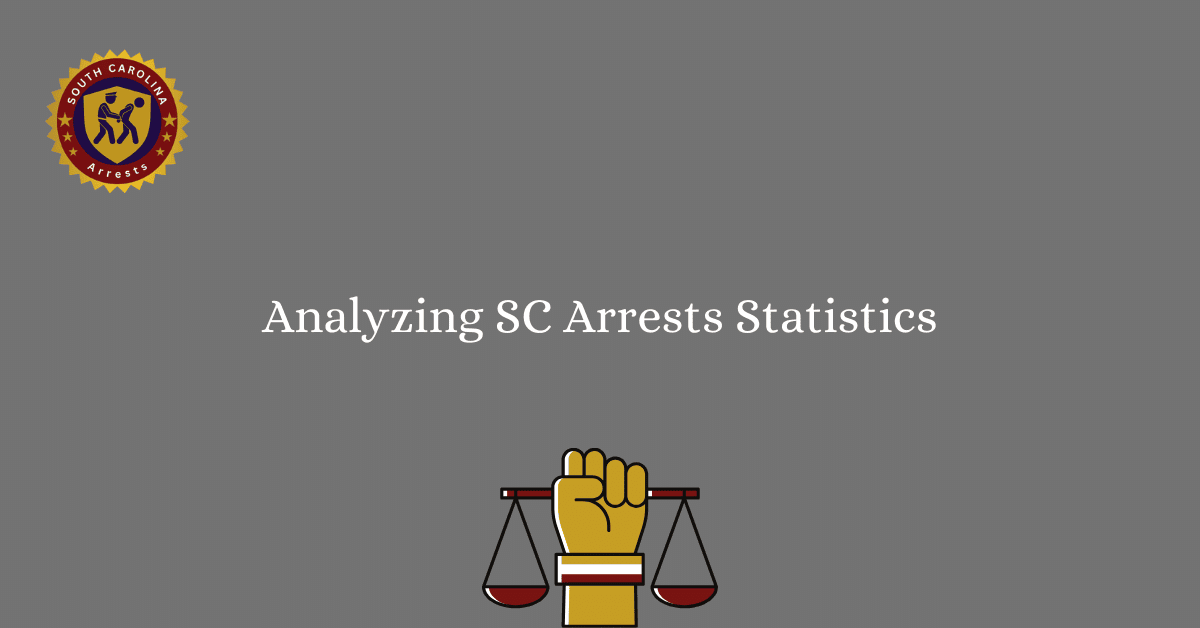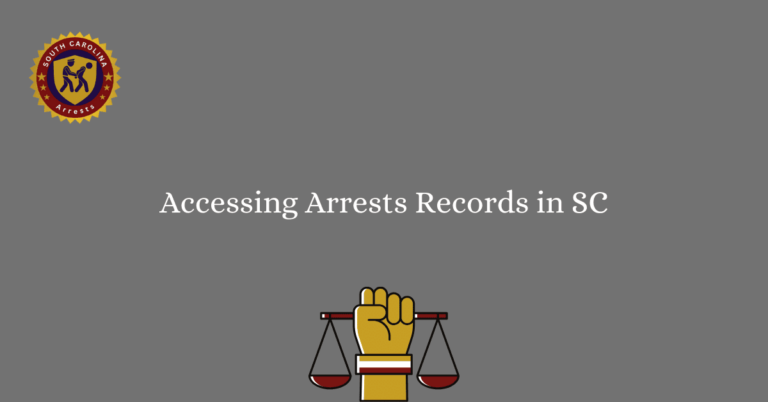Analyzing SC Arrests Statistics
South Carolina Arrests Statistics reveals important insights into law enforcement trends and public safety concerns. Through a detailed analysis of arrest data, patterns and shifts in criminal activity can be identified, leading to more effective crime prevention strategies and resource allocation. Understanding the demographics of those being arrested, the types of offenses committed, and the geographical distribution of arrests can inform policymakers, law enforcement agencies, and the community at large.
South Carolina Arrests Statistics allows for a nuanced understanding of the criminal justice system’s workings and its impact on society. By studying the reasons behind fluctuations in arrest rates and the outcomes of these arrests, a clearer picture emerges of the challenges and successes in maintaining public safety. This data-driven approach not only sheds light on the current state of law enforcement in South Carolina but also points towards potential areas for improvement and intervention.
Overview of Arrest Statistics in South Carolina
South Carolina is a state with a diverse population and a unique set of challenges when it comes to crime and law enforcement. Analyzing arrest statistics in the state provides valuable insights into the types of offenses that are most prevalent, the demographics surrounding arrests, and trends in law enforcement and public safety.
Types of Offenses Most Prevalent in the State
When looking at arrest statistics in South Carolina, it becomes clear that certain offenses are more common than others. Crimes such as drug-related offenses, property crimes, and violent crimes tend to top the list of most prevalent offenses in the state. This data is crucial for understanding where resources should be allocated to address these issues effectively.
Demographics Surrounding Arrests in South Carolina
Demographic factors play a significant role in arrest statistics in South Carolina. Factors such as age, gender, race, and socioeconomic status can all impact the likelihood of being arrested for a particular offense. Analyzing this data can help identify disparities in the criminal justice system and inform targeted interventions to address these disparities.
Insights into Law Enforcement Trends and Public Safety
Examining arrest statistics can provide insights into law enforcement trends and public safety concerns in South Carolina. By identifying patterns in arrests and crime rates, law enforcement agencies can better allocate resources and develop strategies to address emerging issues effectively. This data is crucial for ensuring the safety and well-being of all residents in the state.
Areas Requiring Increased Attention and Resources
One of the key benefits of analyzing arrest statistics is identifying areas that require increased attention and resources. By pinpointing hotspots for specific offenses or demographics that are disproportionately impacted by arrests, policymakers and law enforcement agencies can implement targeted interventions to address these issues effectively and prevent future criminal activity.
Importance of Data for Policymakers and Law Enforcement
Data analysis plays a crucial role in informing policymakers and law enforcement agencies in South Carolina. By utilizing arrest statistics, decision-makers can make informed decisions about resource allocation, policy development, and intervention strategies. This data-driven approach is essential for ensuring that efforts to improve public safety are evidence-based and effective.
Addressing Potential Issues Effectively
Analyzing arrest statistics allows for a proactive approach to addressing potential issues in South Carolina. By identifying trends and patterns in arrests, law enforcement agencies can develop targeted strategies to prevent crime, reduce recidivism, and improve public safety. This proactive stance is essential for addressing the root causes of criminal behavior and fostering a safer community for all residents.
Utilizing Statistics to Make Informed Decisions
Utilizing arrest statistics enables policymakers and law enforcement agencies to make informed decisions about crime prevention and public safety initiatives in South Carolina. By analyzing data on arrests, trends, and demographics, decision-makers can develop evidence-based strategies that are tailored to the specific needs of communities and populations at risk. This data-driven approach maximizes the impact of resources and ensures that efforts are targeted where they are most needed.
Implications of Arrest Data on Public Policy Planning
The implications of arrest data on public policy planning in South Carolina are far-reaching. By analyzing arrest statistics, policymakers can identify areas for improvement in the criminal justice system, develop evidence-based interventions, and monitor the effectiveness of policy changes over time. This data-driven approach is essential for creating policies that are responsive to the needs of communities and promote public safety for all residents.
Frequently Asked Questions
Our Frequently Asked Questions section aims to provide comprehensive information on Analyzing SC Arrests Statistics, addressing common queries and ensuring clarity on the topic.
What are SC Arrests Statistics?
SC Arrests Statistics refer to data and information related to arrests made in the state of South Carolina. This data includes demographic information, types of offenses, trends over time, and other relevant details.
How can I access SC Arrests Statistics?
SC Arrests Statistics are typically available through official sources such as the South Carolina Law Enforcement Division (SLED) website, government reports, and research publications. It is important to ensure the credibility and accuracy of the sources you refer to.
What insights can be gained from Analyzing SC Arrests Statistics?
By analyzing SC Arrests Statistics, researchers and policymakers can identify trends in crime rates, demographic patterns, areas of concern, effectiveness of law enforcement strategies, and other valuable insights. This data can inform decision-making and resource allocation for crime prevention and intervention efforts.
Are there any limitations to interpreting SC Arrests Statistics?
It is crucial to consider limitations such as underreporting of certain offenses, biases in enforcement practices, changes in data collection methods over time, and other factors that may impact the interpretation of SC Arrests Statistics. Understanding these limitations is essential for drawing accurate conclusions from the data.
How can I use SC Arrests Statistics for research or advocacy purposes?
Researchers, policymakers, advocates, and community organizations can utilize SC Arrests Statistics to support their work in various ways, including identifying areas for intervention, evaluating the impact of criminal justice policies, advocating for reform, and raising awareness about social issues related to crime and law enforcement in South Carolina.
Where can I find additional resources on Analyzing SC Arrests Statistics?
In addition to official sources and government reports, there are academic publications, research studies, online databases, and organizations specializing in criminal justice research that provide valuable insights and data on SC Arrests Statistics. Exploring these resources can enhance your understanding of the topic and facilitate further analysis and discussion.







